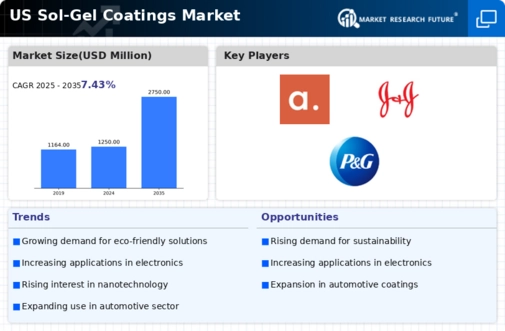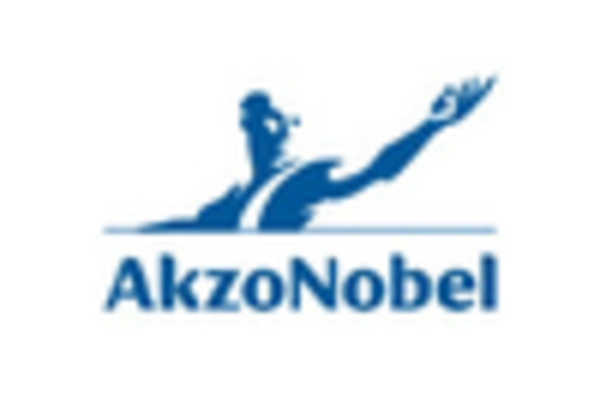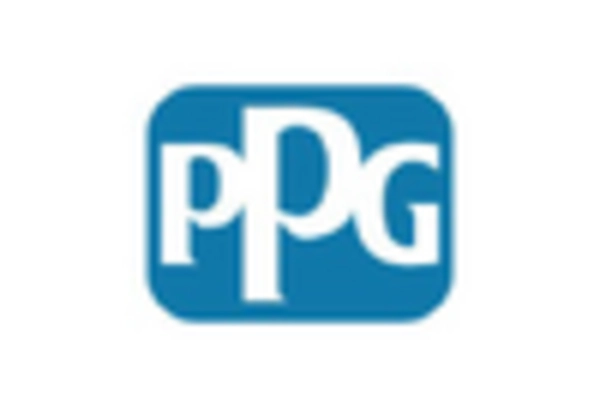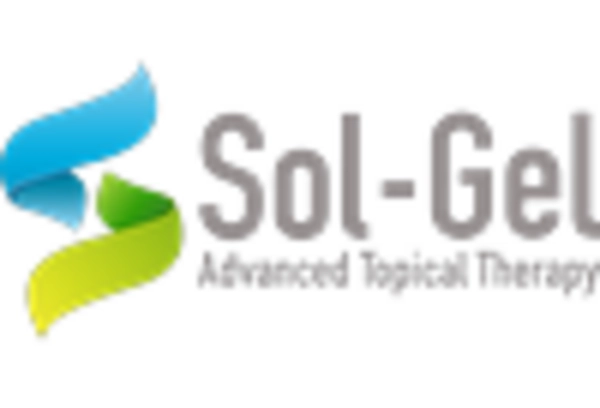Growth in the Electronics Sector
The sol gel-coatings market is experiencing significant growth due to the expanding electronics sector. With the increasing production of electronic devices, there is a rising need for coatings that provide enhanced durability and protection against environmental factors. Sol gel coatings are particularly valued for their ability to create thin, uniform layers that improve the performance and longevity of electronic components. The market for electronic devices in the US is projected to reach $1 trillion by 2026, which could further propel the demand for sol gel coatings. This growth in the electronics sector is likely to be a key driver for the sol gel-coatings market.
Advancements in Coating Technologies
Technological advancements in coating processes are significantly impacting the sol gel-coatings market. Innovations such as improved application techniques and enhanced formulation of sol gel materials are leading to better performance characteristics, including increased adhesion, scratch resistance, and thermal stability. These advancements are making sol gel coatings more appealing for various applications, including automotive, aerospace, and industrial sectors. As manufacturers continue to invest in research and development, the sol gel-coatings market is expected to see a surge in new product offerings, potentially increasing market share by 10% over the next few years.
Rising Demand for Eco-Friendly Coatings
The increasing awareness regarding environmental sustainability is driving the demand for eco-friendly coatings in the sol gel-coatings market. Consumers and industries are seeking alternatives that minimize environmental impact, leading to a shift towards coatings that are non-toxic and biodegradable. This trend is particularly evident in sectors such as construction and automotive, where regulations are becoming stricter. The sol gel-coatings market is expected to benefit from this shift, as these coatings often utilize raw materials that are less harmful to the environment. Furthermore, the market is projected to grow at a CAGR of approximately 7% over the next five years, indicating a robust demand for sustainable solutions.
Regulatory Support for Advanced Coatings
Regulatory frameworks in the US are increasingly supporting the adoption of advanced coatings, including sol gel technologies. Government initiatives aimed at promoting energy efficiency and reducing emissions are encouraging industries to adopt innovative coating solutions. This regulatory support is likely to enhance the competitive landscape of the sol gel-coatings market, as companies strive to comply with environmental standards. The market could see a growth rate of around 6% annually as industries align their practices with these regulations, thereby driving demand for sol gel coatings that meet stringent performance and environmental criteria.
Expanding Applications in the Automotive Industry
The automotive industry is a significant driver for the sol gel-coatings market, as manufacturers seek coatings that enhance vehicle performance and aesthetics. Sol gel coatings offer unique properties such as high resistance to UV radiation and corrosion, making them ideal for automotive applications. As the industry shifts towards lightweight materials and improved fuel efficiency, the demand for advanced coatings is expected to rise. The automotive sector in the US is projected to grow by 5% annually, which could lead to increased adoption of sol gel coatings, further solidifying their position in the market.

















Leave a Comment